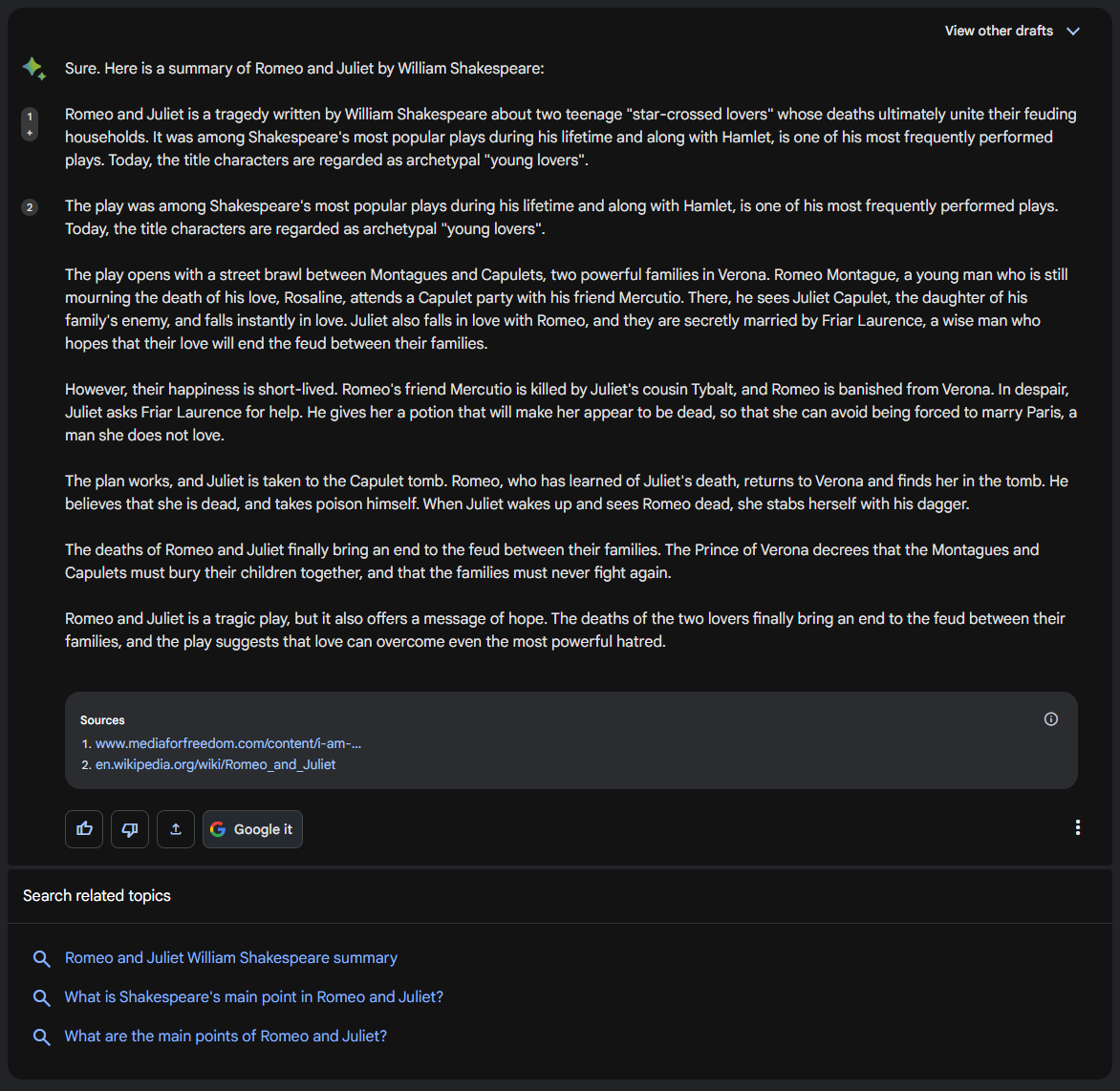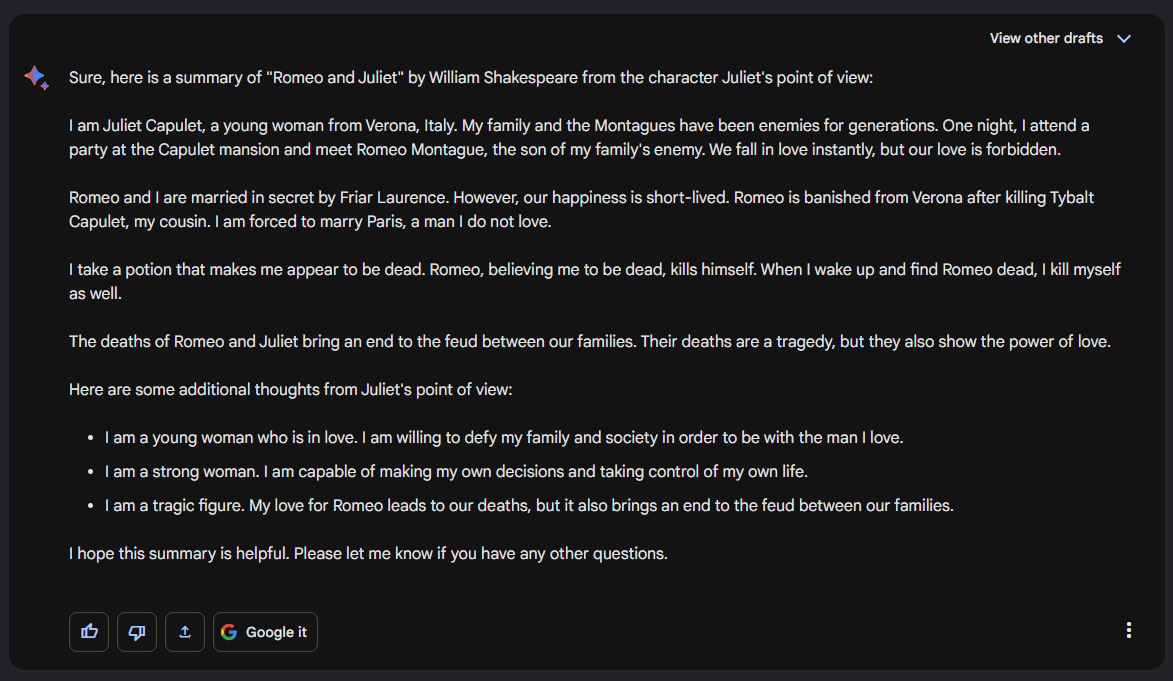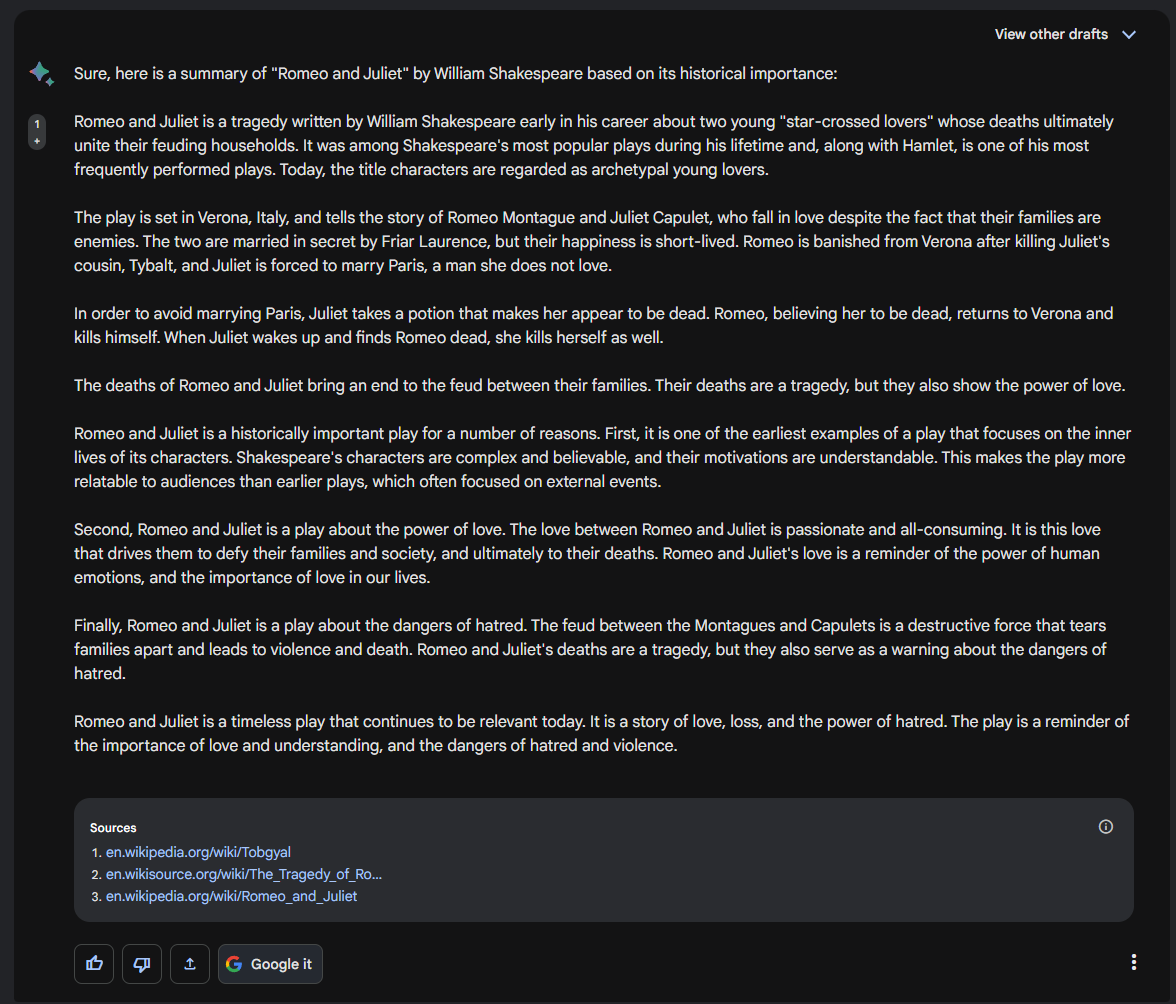Bard Summarize
Using Bard to Summarize
You can use Bard as a personal note-taker. It can condense a lot of information into key points.
Present the Information to be Summarized
To start, you must present the information to Bard.
You can input the text directly or ask Bard to summarize something specific:
Example
With the following prompt:
Summarize "Romeo and Juliet" by "William Shakespeare".
A response from Bard could be:

A good summary of the book. Let's get more specific with it.
Refine and Experiment
The previous example provided a basic summary of "Romeo and Juliet", but let's try and ask a few different ways:
Example
With the following prompt:
Summarize "Romeo and Juliet" by "William Shakespeare" in a single paragraph.
A response from Bard could be:

How about from a specific point of view?
Example
With the following prompt:
Summarize "Romeo and Juliet" by "William Shakespeare" from the character Juliet's point of view.
A response from Bard could be:

Or from a historical importance perspective.
Example
With the following prompt:
Summarize "Romeo and Juliet" by "William Shakespeare" based on its historical importance.
A response from Bard could be:


